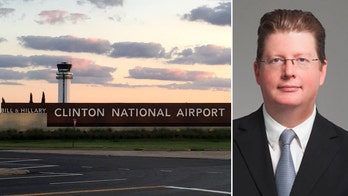WASHINGTON – More people sought unemployment benefits last week, pushing the number of applicants to the highest level in two months.
The Labor Department said Thursday that weekly unemployment benefit applications jumped 13,000 to a seasonally adjusted 380,000. The previous week's figures were also revised higher. The four-week average, a less volatile measure, rose to 368,500.
After steadily declining since last fall, applications have leveled off in recent weeks. The four-week average is essentially unchanged over the past two months.
When applications fall below 375,000, it generally suggests that hiring will be strong enough to lower the unemployment rate.
The figures come after a disappointing employment report last week that showed that employers added only 120,000 jobs in March, half the average pace in the preceding three months. But many economists downplayed the weak March figures, noting that a warmer winter may have led to some earlier hiring in January and February.
The economy has added an average of 212,000 jobs per month in the January-March quarter, well ahead of last year's pace. And the unemployment rate has fallen from 9.1 percent in August to 8.2 percent in March. One factor is that some people have given up looking for work. People who are out of work but not looking for jobs aren't counted as unemployed.
Economists note that applications for unemployment aid are at a much lower level than they were last year, suggesting that March's weak numbers might have been a temporary lull.
A similar message resonated from a Federal Reserve survey released Wednesday. All of the Fed's 12 bank districts reported that the economy grew steadily from mid-February through April 2. And hiring was stable or increased in most of the country during that time.
Additional hiring has boosted consumer confidence and spurred more spending. Consumer spending jumped in February by the most in seven months, the government said last month. And many large retail chains have reported healthy sales for March.
Higher auto sales and solid business demand for machinery and other equipment is boosting factory output. The manufacturing sector expanded in March at a faster pace than the previous month, according to a private survey.
The economy grew at an annual rate of just 3 percent in the October-December quarter. Most economists are predicting that growth slowed in the January-March quarter to an annual rate of under 2.5 percent.
Fed Chairman Ben Bernanke has cautioned that the economy is growing too slowly to maintain recent declines in the unemployment rate.
Bernanke has said growth normally needs to be closer to 4 percent for a full year to lower the unemployment rate by a full percentage point. He has warned that hiring is likely to slow until consumers and businesses spend more, fueling faster growth.
Greater hiring hasn't led to larger paychecks. Wages aren't rising fast enough to keep up with inflation. Rising gas prices are also weighing on consumers' ability to spend money on other goods and services. Europe's debt crisis has flared up again, as Spain and Italy have been forced in recent days to pay higher interest rates on their debts.




